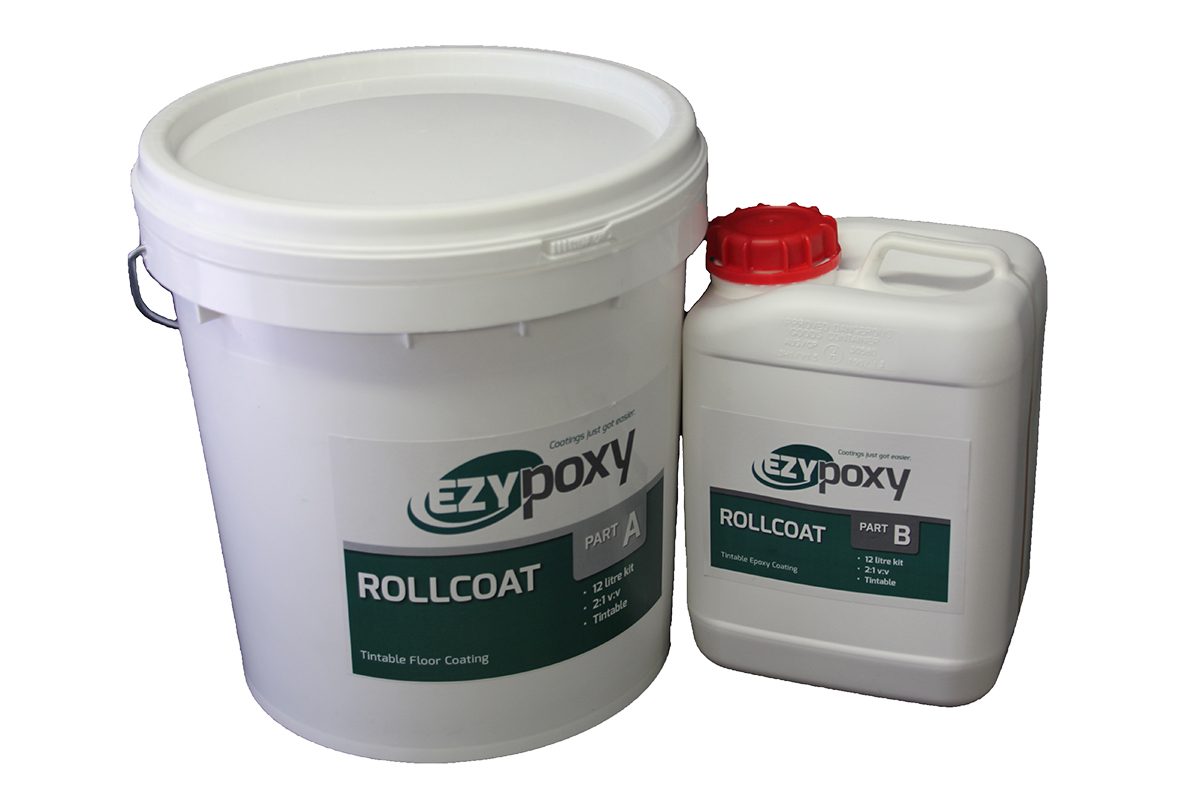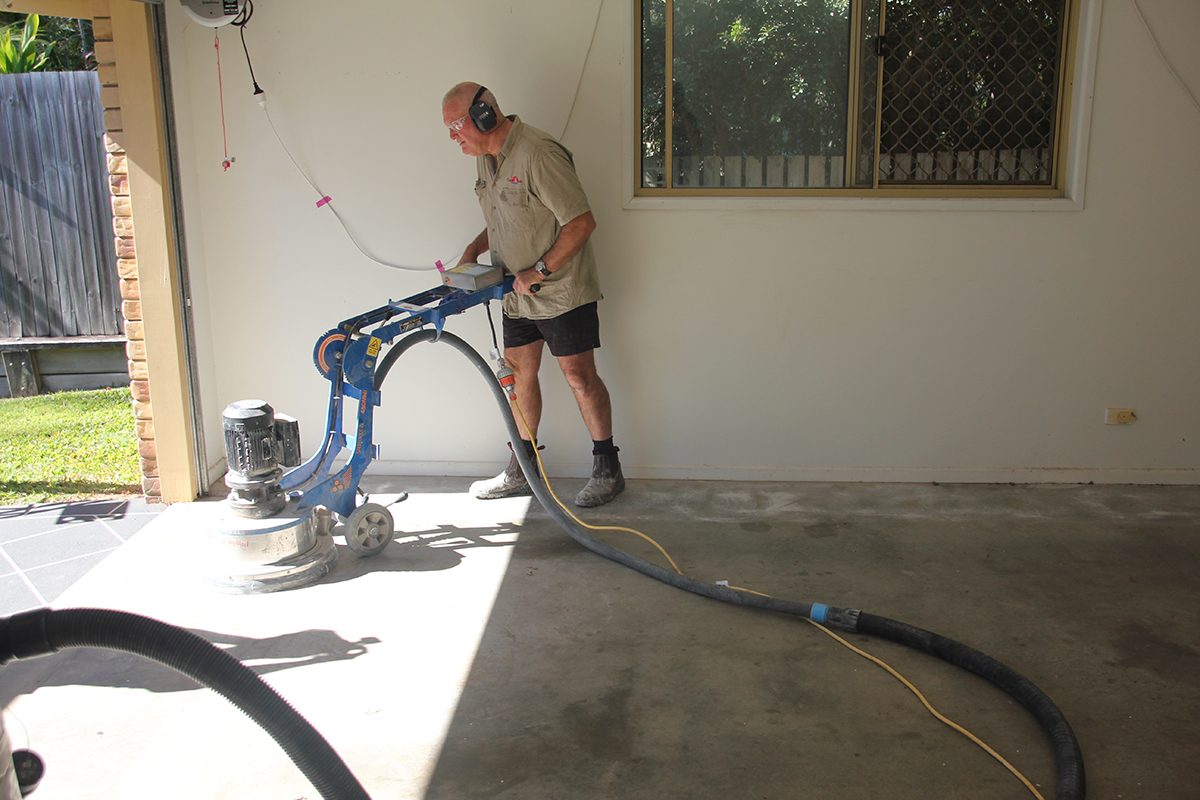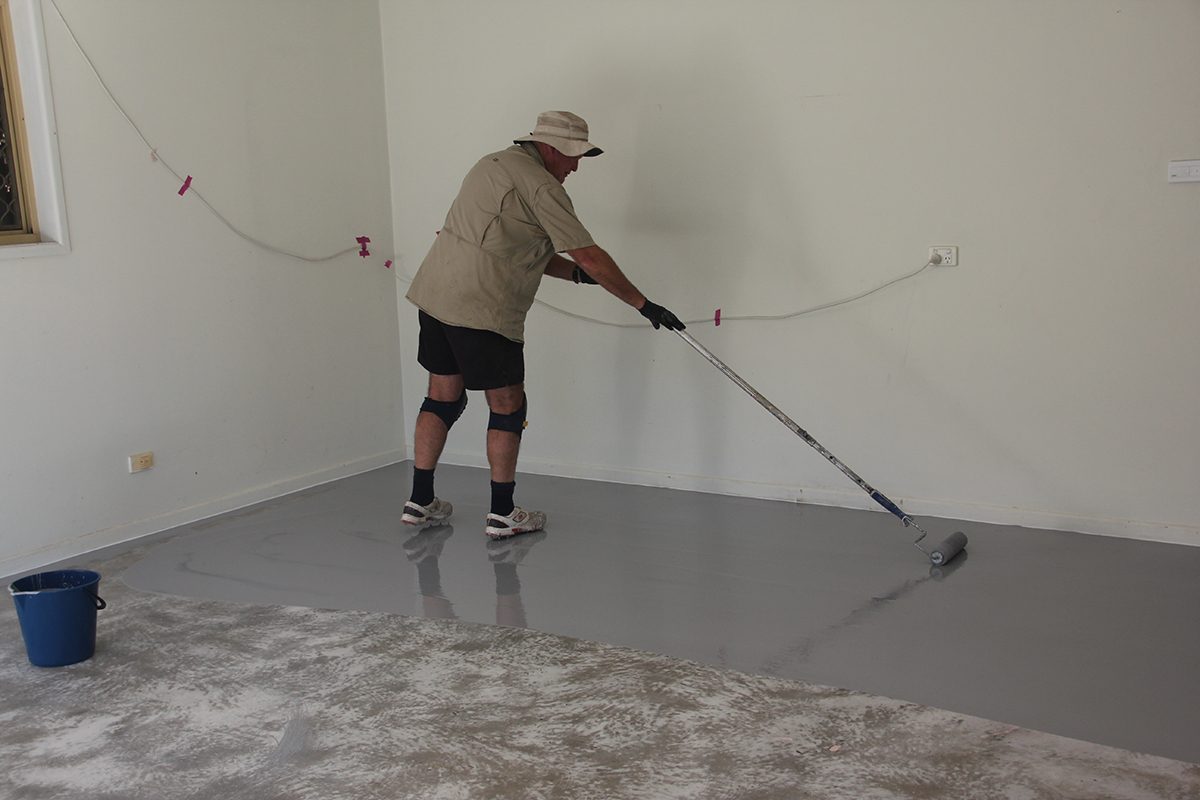Home › What is epoxy flooring?
Whether you’re a floor owner looking to get new epoxy flooring or an installer just starting their epoxy flooring career, having a firm grasp of the basics is important to help make good decisions right from the beginning.
In this article, I’ll cover just a few of key concepts and terms related to epoxy flooring so that you have a better platform to build upon for further learning. This includes a brief introduction into how it works, what it's used for, and even some of the imperfections that can occur.
Acid Etch: Acid etching refers to the use of acids to clean and profile a concrete surface prior to the application of epoxy flooring. Acid etching was traditionally the preferred method for preparing concrete for thin-film epoxy flooring, however increased environmental awareness has seen alternative methods used. The vast majority of surface preparation for modern epoxy flooring is done through mechanical grinding and shot blasting.
Aggregate: Hard, inert particles such as sand/quartz, aluminium oxide etc. that are broadcast onto or mixed into epoxy flooring to provide non-slip texture and/or improved wear resistance.
Amine Blush: Some amines used for epoxy flooring can develop a surface oiliness/waxiness or whitish appearance. This phenomenon is called amine blush and is caused by moisture and carbon dioxide from the atmosphere and can cause a number of headaches for epoxy flooring films, such as reduced gloss, tackiness/greasiness and poor adhesion.
Backroll: Backrolling is an application technique used to improve the smoothness/evenness of an applied epoxy flooring film. After a floor coating has been roughly spread or rolled into place, it is then rolled again to achieve a more even finish.
Bleeding: Can describe both the migration of an epoxy flooring film underneath a taped edge, or discolouration caused by migration of pigments in an epoxy flooring film.
Blistering: Blistering is the formation of small bubbles in epoxy flooring. The bubbles are formed because of water migration through the film, which accumulates at the substrate/coating interface. If the migration is sufficient to create significant pressure within the blister, small sections of the epoxy flooring film can be removed when the bubble ruptures.
Broadcasting: Broadcasting is the process of tossing flake or mineral aggregate onto epoxy flooring for decorative effect, or to create a textured surface and a non-slip epoxy floor. This type of broadcasting is done in a manner similar to spreading grass seed or feeding chickens.
Chalking: Chalking is the formation of a loose powder on the surface of epoxy flooring. The powder is actually a part of the coating (usually pigment or filler) that has loosened as the film weathers with UV exposure.
Crawling: Crawling is used to describe the movement of epoxy flooring films that causes the surface underneath to be exposed or visible, often in the shape of a crater or “fisheye”. Surface contamination in the form of oils, fats or detergents are the main cause, however they can also form around large particles of dirt, dust etc.
Corrosive: A corrosive material is a substance that causes damage to skin, eyes or other parts on the body upon contact. The technical definition is the destruction, or irreversible damage to living tissue on the area of contact. The SDS of all epoxy flooring products need to be checked so that you’re aware of the hazards they contain.
Coverage: The coverage of epoxy flooring is usually expressed as square metres per litre of product (m2/L). The wet film thickness can be used to calculate the expected coverage. For example, epoxy flooring applied at 1mm thickness (1000 microns), will cover 1 square metre per litre used. Another example is a film thickness of 400 microns will cover 2.5 square metres per litre used.
Dry Film Thickness (DFT): Some epoxy flooring contains solvents and other volatile compounds in them, so thickness at which the products are applied will not remain constant as it dries. The solvents will evaporate and cause the thickness to shrink. The dry film thickness is the thickness of the film once all the solvents have escaped the film.
Epoxy Mortar: Epoxy mortars are made by combining epoxy resin with large quantities of aggregate material to form a dry, paste-like product that can be applied by trowel at high film thickness (often 5mm and over). They are most commonly used to level rough, badly worn or uneven surfaces prior to the application of epoxy flooring.
Filler: Filler is a generic term for the powders that get mixed into epoxy flooring products to increase viscosity, pigment opacity and some performance properties such as wear resistance.
Flammable: The flammability relates to the ability of a substance to be ignited. All forms of matter – solids, liquids, and gases – can be flammable. For epoxy flooring, the major concern is with volatile solvents used in solvent-borne products.
Floating/Flooding: Floating and flooding relate to discolouration of epoxy flooring. Floating is usually the appearance of streaks that create a mottling effect, whereas with flooding a complete, albeit subtle, colour change is experienced.
Gel Time: The gel time is the time taken to reach a solid state once the Part A and Part B of the epoxy flooring product is mixed. At this point, the mixture loses all of its fluid properties, i.e. ability to flow, and will be solid to the touch (although perhaps still tacky).
Gloss: The appearance of a surface to be “shiny”. Gloss results from the even reflection of light from particularly smooth surfaces.
Grinding: Grinders use abrasive diamonds on rotating discs to remove sealers, coatings/paints, mastics, glues, laitance and superficial contamination from concrete slabs. They can also be used effectively to level rough surfaces, uneven joints or high spots of 1-3mm. Diamond grinding achieves a concrete surface profile (CSP) that is suitable for the application of thin-film rollcoat, broadcast and some decorative epoxy flooring systems.
Holidays: A term used to describe areas that were accidentally missed (or had very low film thickness) during the application of epoxy flooring.
Jiffy Mixer: Jiffy is a type of specialist epoxy flooring mixing blade. These types of blades have a round, cage-like appearance and are designed to blend epoxy flooring components together without trapping too much air.
Kit: Two-pack epoxy flooring is supplied in kits that are sized by the total volume of mixed Part A and B. Because of the volume required to complete flooring applications, these typically start at 8 litres, however larger volumes are common. As an example, a 12-litre kit of an epoxy rollcoat with a 2:1 by volume mix ratio would have 8 litres in Part A and 4 litres in Part B.
Laitance: An accumulation of loose, fine powder on the surface of concrete caused by the upward movement of water throughout the drying process. Laitance must be removed prior to the application of epoxy flooring as it can interfere with adhesion.
Micron: A unit of length used to characterise epoxy flooring thicknesses - 1,000 microns = 1mm.
Nap: The length of the fibres on a roller cover used to apply epoxy flooring.
Opacity: The extent that a floor coating “hides” the surface underneath. Epoxy flooring with low opacity will allow the surface to be seen through the film. Generally speaking, higher filler/pigment levels and more even application of films will improve opacity in coatings.
Pigment Pot: Pigment pots contain coloured epoxy paste that can be mixed into the Part A of a tintable floor coating to give it colour.
Pinholes: Pinholes are burst bubbles that result from air migrating through an epoxy flooring film when the product has nearly gelled. As the film has partially hardened, it can’t re-level fully and instead leaves tiny craters with a central throat. You can read more about pinholes and bubbles in a separate article.
Pot Life: The pot life can be viewed as the time it takes for epoxy flooring to harden to a point where it becomes “unworkable” in the container. This point corresponds to an approximate doubling of the original viscosity of the mixture and makes the product difficult to apply.
Primer: A product applied to the surface as an undercoat primarily to improve adhesion in the epoxy flooring system being installed.
Safety Data Sheet (SDS): A document containing information on the hazards associated with epoxy flooring products. This includes notes on health hazards and effects (including first aid), precautions for use (protection, equipment etc.), safe handling information (storage, transport, spills, disposal), physical and chemical properties, product composition and other important information.
Sealer: Often a clear, low-viscosity epoxy that is used to seal porous concrete prior to the application of epoxy flooring systems. This sealing is done to prevent the subsequent coats from soaking into the slab too much, which can result in patchiness and other defects.
Self-levelling: A property of some epoxy flooring that helps the applied films form a completely smooth surface upon application without additional smoothing techniques.
Settling: The separation of ingredients in the container while in storage. This is most commonly seen as a thick layer of filler at the bottom of Part A buckets. Epoxy flooring products that have significant settling will need to be re-dispersed before use.
Solvent-based: Solvent-based coatings are coatings that are miscible with organic solvents, but do not necessarily contain any solvents. This means that they can be thinned and cleaned-up with solvents such as MEK, Acetone, Methylated Spirits and other thinners.
Solvent-borne: Solvent-borne coatings consist of a resin system that is dispersed in an organic solvent. Solvent-borne coatings need certain quantities of solvents (as much as 70% by volume) to reduce the viscosity so that they can be applied easily. Once the coatings are applied, the solvent evaporates and leaves the resin on the surface. In water-borne and latex coatings the same principle applies, however the main solvent is water.
Substrate: The surface onto which epoxy flooring is applied.
Technical Data Sheet: Technical Data Sheets are very important documents that summarise the technical characteristics of epoxy flooring products. This typically includes a description of the product, it’s intended uses, a list of features or benefit, physical properties, testing and performance data, as well as guidance on mixing, application and safe handling.
Thinner: A low-viscosity liquid – often an organic solvent – that is added to some epoxy flooring products to help make application easier by lowering viscosity or extending pot life.
Tintable: Tintable epoxy coatings contain no pigment in the Part A when supplied and require a Pigment Pot to provide the colour. Tintable formulations are offered for greater variety and flexibility when it comes to colour choices.
v:v: Notation accompanying mixing ratios meaning “by volume”, e.g. 2:1 v:v or 3:2 v:v.
Viscosity: The viscosity of a liquid can be described as its resistance to flow. High-viscosity epoxy flooring will have a very “thick” feel and will tend to resist flowing.
Wet Film Thickness (WFT): The wet film thickness is the initial application thickness of the epoxy flooring. If the product contains solvents, they will evaporate from the film and reduce the thickness to the dry film thickness. For products without solvents, the wet film thickness is the same as the dry film thickness.



Real World Epoxies has formulated, manufactured and supplied high-quality epoxy flooring systems and products for more than two decades. We stand behind our products because we only use proven, high-quality materials that we know will perform as expected. You can trust our epoxy supplies for your epoxy flooring project.
Let us help you with your epoxy flooring needs when you fill out one of our contact forms or call us on 1300 EPOXIES (1300 376 943).
To help build a strong resin flooring industry that sits alongside timber, carpet, tiles and vinyl as a mainstream flooring option.
To eliminate preventable failures
that hurt the resin flooring industry
and prevent it from reaching its full potential.

